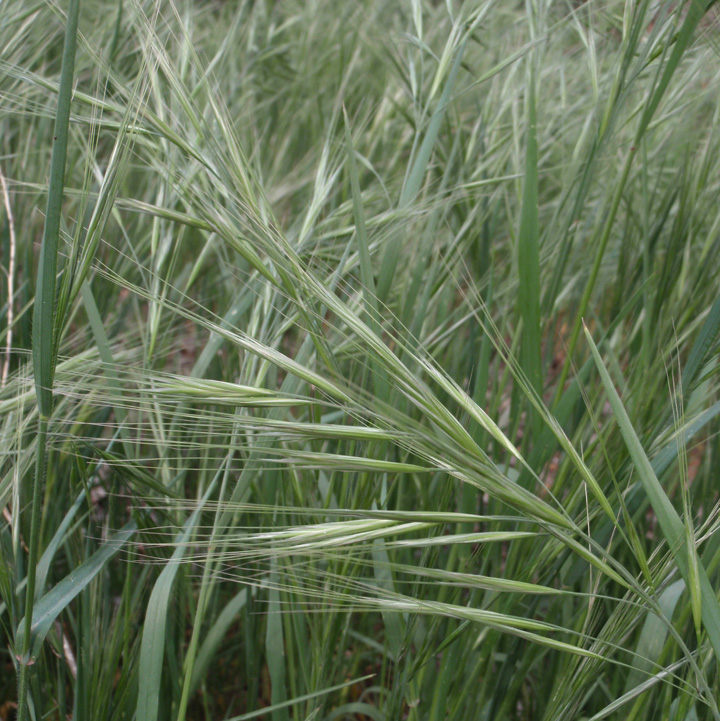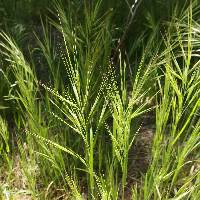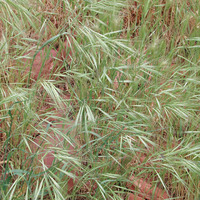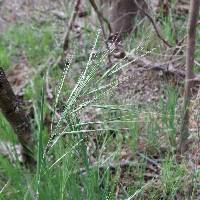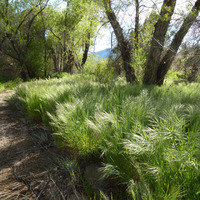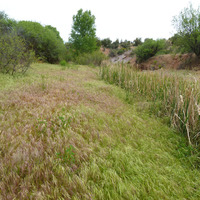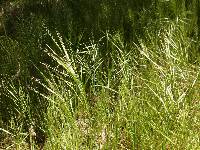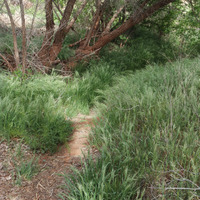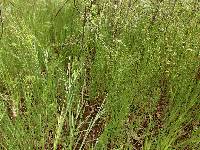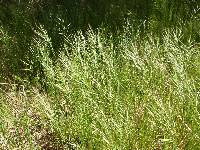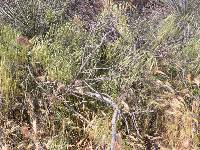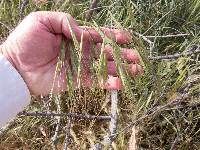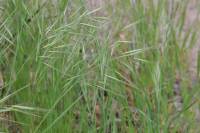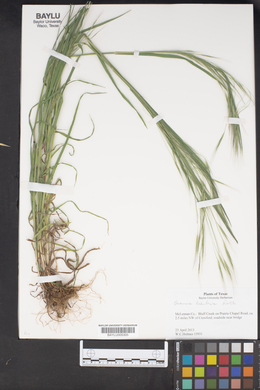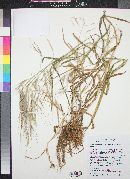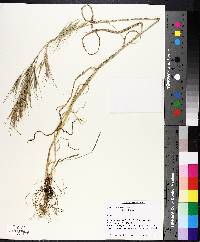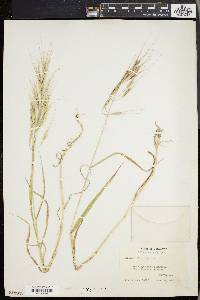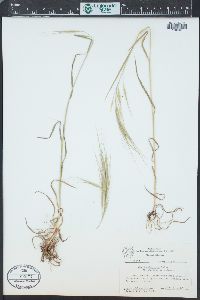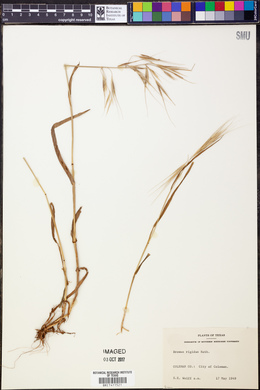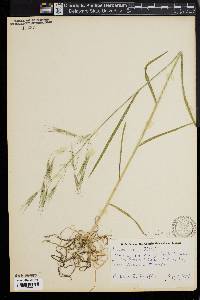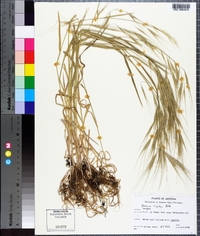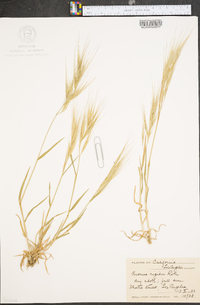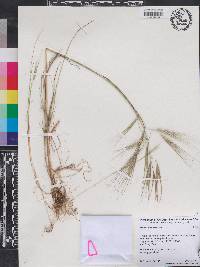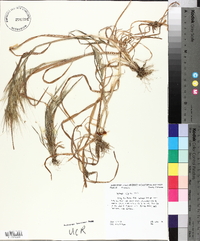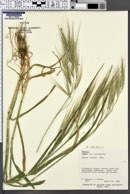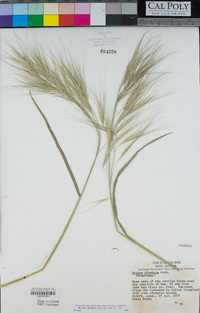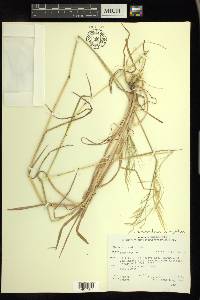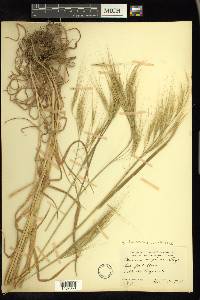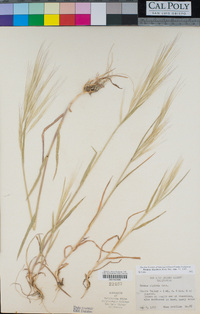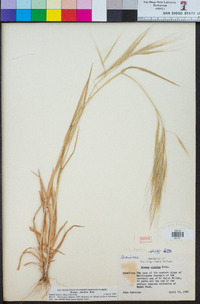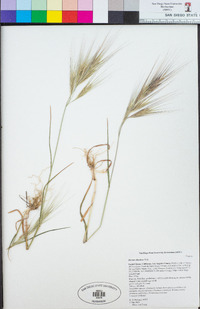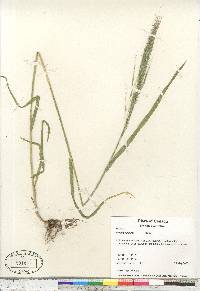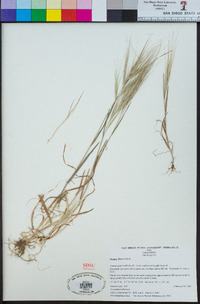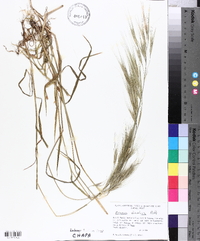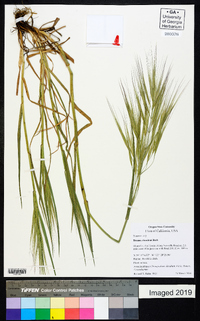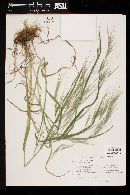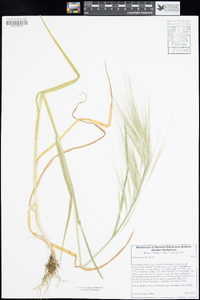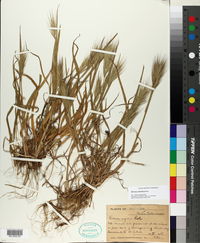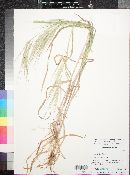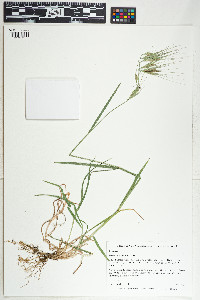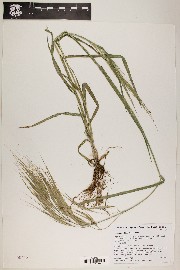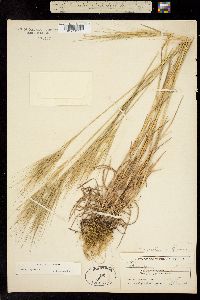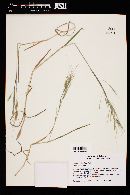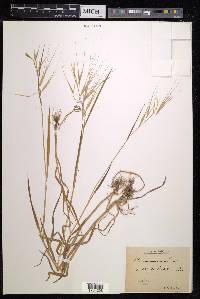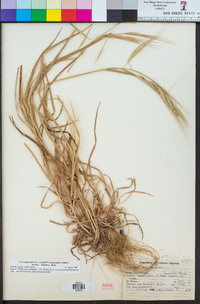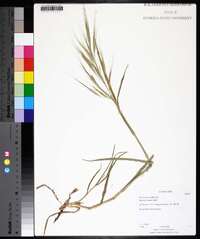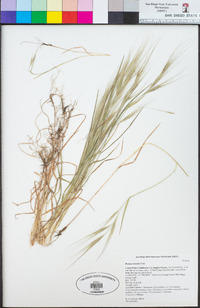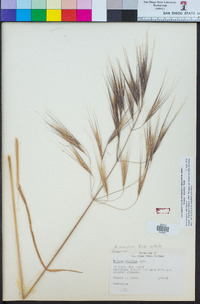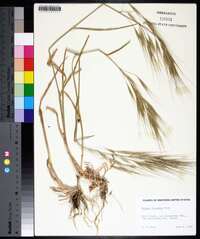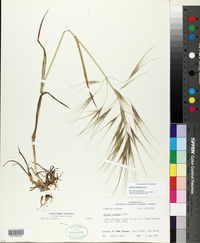
|
|
|
|
Family: Poaceae
Great Brome, more...ripgut brome, Ripgut Grass
[Anisantha diandra (Roth) Tutin ex Tzvelev, moreAnisantha gussonii (Parl.) Nevski, Bromus diandrus var. gussonei (Parl.) Coss. & Durieu, Bromus gussonei Parl., Bromus gussonii Parl., Bromus maximus var. gussonei (Parl.) Parl., Bromus rigidus subsp. gussonei (Parl.) Maire, Bromus rigidus var. gussonei (Parl.) Coss. & Durieu, Bromus villosus var. gussonei (Parl.) Asch. & Graebn., Zerna gussonei (Parl.) Grossh.] |
Plants annual. Culms 20-90 cm, erect or decumbent, puberulent below the panicle. Sheaths softly pilose, often with retrorse or spreading hairs; auricles absent; ligules 2-3 mm, glabrous, obtuse, lacerate or erose; blades 3.5-27 cm long, 1-9 mm wide, both surfaces pilose. Panicles 13-25 cm long, 2-12 cm wide, erect to spreading; branches 1-7 cm, stiffly erect to ascending or spreading, with 1 or 2 spikelets. Spikelets 25-70 mm, sides parallel or diverging distally, moderately laterally compressed, with 4-11 florets. Glumes smooth or scabrous, margins hyaline; lower glumes 15-25 mm, 1-3-veined; upper glumes 20-35 mm, 3-5-veined; lemmas 20-35 mm, linear-lanceolate, scabrous, 7-veined, rounded over the midvein, margins hyaline, apices bifid, acuminate, teeth 3-5 mm; awns 30-65 mm, straight, arising 1.5 mm or more below the lemma apices; anthers 0.5-1 mm. 2n = 42, 56. Bromus diandrus is native to southern and western Europe. It is now established in North America, where it grows in disturbed ground, waste places, fields, sand dunes, and limestone areas. It occurs from southwestern British Columbia to Baja California, Mexico, and eastward to Montana, Colorado, Texas, and scattered locations in the eastern United States. The common name -ripgut grass- suggests possible damage to animals if they consume the sharp, long-awned florets of this species. Bromus diandrus, as treated here, includes B. rigidus Roth. Sales (1993) reduced these two taxa to varietal rank, and pointed out that the differences between them are subtle enough that identification of many specimens beyond B. diandrus sensu lato is often impossible. Dr. David Bogler, USDA NRCS PLANTS Database Annuals, Terrestrial, not aquatic, Stems nodes swollen or brittle, Stems erect or ascending, Stems solitary, Stems caespitose, tufted, or clustered, Stems terete, round in cross section, or polygonal, Stem internodes hollow, Stems with inflorescence less than 1 m tall, Stems with inflorescence 1-2 m tall, Stems, culms, or scapes exceeding basal leaves, Leaves mostly cauline, Leaves conspicuously 2-ranked, distichous, Leaves sheathing at base, Leaf sheath mostly closed, Leaf sheath hairy, hispid or prickly, Leaf sheath and blade differen tiated, Leaf blades linear, Leaf blades 2-10 mm wide, Leaf blades mostly flat, Leaf blades more or less hairy, Leaf blades scabrous, roughened, or wrinkled, Ligule present, Ligule an unfringed eciliate membrane, Inflorescence terminal, Inflorescence an open panicle, openly paniculate, branches spreading, Inflorescence solitary, with 1 spike, fascicle, glomerule, head, or cluster per stem or culm, Inflorescence lax, widely spreading, branches drooping, pendulous, Inflorescence with 2-10 branches, Inflorescence branches more than 10 to numerous, Flowers bisexual, Spikelets pedicellate, Spikelets laterally compressed, Spikelet 3-10 mm wide, Spikelets with 3-7 florets, Spikelets solitary at rachis nodes, Spikelets all alike and fertille, Spikelets bisexual, Spikelets disarticulating above the glumes, glumes persistent, Spikelets disarticulating beneath or between the florets, Rachilla or pedicel glabrous, Glumes present, empty bracts, Glumes 2 clearly present, Glumes equal or su bequal, Glumes distinctly unequal, Glumes shorter than adjacent lemma, Glumes 1 nerved, Glumes 3 nerved, Lemmas thin, chartaceous, hyaline, cartilaginous, or membranous, Lemma 5-7 nerved, Lemma glabrous, Lemma apex dentate, 2-fid, Lemma distinctly awned, more than 2-3 mm, Lemma with 1 awn, Lemma awn 2-4 cm long or longer, Lemma awn subapical or dorsal, Lemma awns straight or curved to base, Lemma margins thin, lying flat, Lemma straight, Palea present, well developed, Palea membranous, hyaline, Palea shorter than lemma, Palea keels winged, scabrous, or ciliate, Stamens 3, Styles 2-fid, deeply 2-branched, Stigmas 2, Fruit - caryopsis, Caryopsis ellipsoid, longitudinally grooved, hilum long-linear, Caryopsis hairy at apex.
FNA 2007, Gould 1980 Common Name: ripgut brome Duration: Annual Nativity: Non-Native Lifeform: Graminoid General: Annual or perennial stems 20-90 cm, erect or decumbent, puberulent below the panicle. Vegetative: Sheaths softly pilose hairs often retrorse or spreading, no auricles, ligules 2-3 mm, glabrous, obtuse, lacerate or erose; blades 3.5-27 cm long, 1-9 mm wide, both surfaces pilose. Inflorescence: Panicles 13-25 cm long, 2-12 cm wide, erect to spreading, branches 1-7 cm, stiffly erect to ascending or spreading, with 1 or 2 spikelets; spikelets 25-70 mm, sides parallel or diverging distally, moderately laterally compressed with 4-11 florets; glumes smooth or scabrous, margins hyaline; lower glumes 15-25 mm, 1-3 veined, upper glumes 20-35 mm, 3-5 veined; lemmas 20-35 mm, linear-lanceolate, scabrous, 7-veined, rounded over midvein, margins hyaline, apices bifid, acuminate, teeth 3-5 mm, awns 30-65 mm, straight, arising 1.5 mm or more below the lemma apices. Ecology: A weed of roadsides and disturbed areas throughout Arizona. Notes: This treatment is in line with FNA 2007, which conflated B. diandrus and B. rigidus, which had acutally been reduced in recent years to the status of subspecies. FNA points out that the morphological distinctions that were used to separate the two were very subtle and not really enough. Ethnobotany: Seeds used in pinole and also in gruel and mush. Etymology: Bromus is from Greek bromo, for stinking, while diandrus means furnished with two or twin stamens. Synonyms: Bromus rigidus var. gussonei, Bromus rigidus Editor: SBuckley, 2010 |
|
|
|

